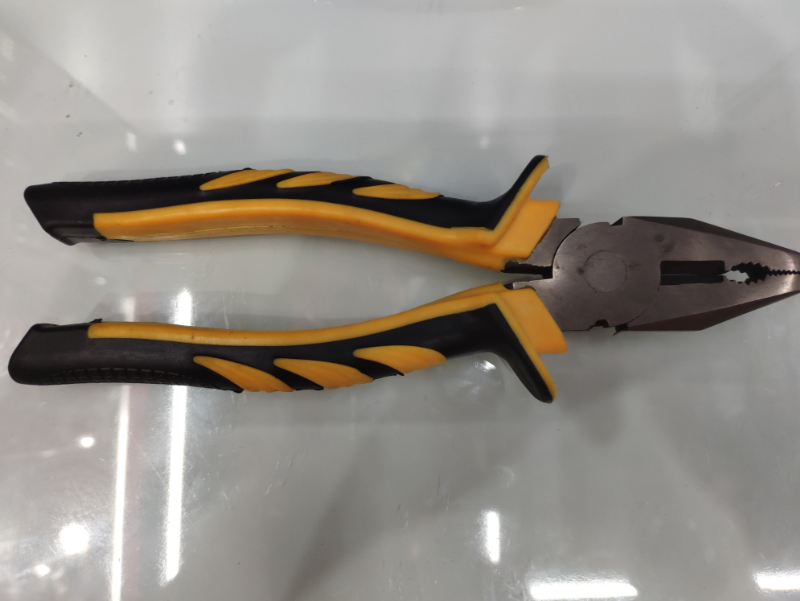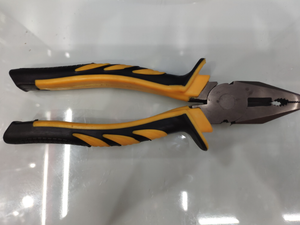
Detailed Explanation of Inspection Methods and Standards for Wire Cutters - Inspection, Audit, Factory Certification Services
Wire cutters, as basic hand tools, their quality directly affects the efficiency of use, operational safety and service life. To ensure that wire cutters products meet national quality standards and customer requirements, a full-process quality control system from material selection, heat treatment process to finished product delivery must be established. This article will, based on the structural characteristics and usage scenarios of wire cutters, systematically introduce their classification, inspection items, inspection standards and factory inspection review points, providing professional guidelines for quality inspectors, purchasers and manufacturing enterprises.
I. Classification and Quality Focus of Wire Cutters
(1) Classification by Material and Grade
High-grade wire cutters: Made of chromium-vanadium steel and nickel-chromium steel, with high hardness and excellent wear resistance.
Mid-range wire cutters: Made of high-carbon steel, with moderate cost performance. The heat treatment process should be given special attention during inspection.
Economy type wire cutters: Made of ductile iron, they are inexpensive but have lower strength and durability.
(2) Classified by Function and Certification
VDE High-Voltage Steel Wire Pliers: Certified by Germany's VDE, the insulated handle can withstand a voltage of ≥ 10,000V
Professional Japanese/American style wire cutters: Focus on ergonomic design, with high precision requirements for the cutting edges.
European/German style wire cutters: Focusing on the overall structure and optimization of the cutting force
II. Inspection Standards and Basis for Goods Verification
(1) Main Standards and Specifications
GB/T 24430.1–2022 General Technical Conditions for Pliers
VDE 0680 Insulation Handle Pliers Safety Standard (German Association of Electrical Engineers)
ISO 5749 - Terminology and Test Methods for Pliers and Forceps
DIN 5259 Standard for Sizes and Tolerances of Wire Cutters
Enterprise technical agreement and special requirements of purchase orders (such as additional standards stipulated by the brand manufacturer)
(2) Key Points of Factory Audit
Quality Management System
Does it have ISO 9001 quality system certification? Are there standardized control documents for the heat treatment process?
Incoming material inspection (IQC) includes the steel material certificate and hardness test records.
Production process control
Is there any real-time monitoring and recording of the temperatures and times for forging, quenching, and tempering?
The grinding accuracy of the cutting edge, and whether there are inspection points for the hinge gap at the cheek area
Product safety certification
The VDE insulated pliers must provide a third-party insulation performance test report.
The exported products must meet the requirements of CE/GS certification (if applicable)
III. Finished Product Inspection Items and Methods
1. Appearance and Structural Inspection
Surface treatment: The electroplating layer is uniform without peeling or scratches, and the anti-rust treatment meets the requirements of salt spray tests.
Handle assembly: The insulating sleeve is not loose or cracked, and there are no cracks at the color junction (single-color handles are better)
Identification is clear: The specifications, materials, certification marks, etc. are permanently marked correctly without any errors.
2. Dimensions and fit accuracy
Top gap of the pliers jaw: There should be a reasonable gap of 0.4 - 0.6mm to prevent the need for adjustment in case of wear later on.
Alignment of the cutting edge centerlines: The two cutting edges must be on the same centerline, without any interlocking or overlapping.
Opening angle: The spread angle should be ≥ 22° to ensure operational flexibility.
3. Performance Test Items
Shearing Performance: Can easily shear 1.6mm hard steel wire, with no chipping at the cutting edge.
Hardness test: Edge hardness HRC 56–62,钳 body hardness HRC 40–48
Insulation performance (VDE class): Handle withstand voltage test ≥ 10,000V, insulation resistance ≥ 100MΩ
Durability test: The standard steel wire was repeatedly sheared 500 times, and the wear of the cutting edge was ≤ 0.1mm.
4. Safety and Humanized Design
Anti-slip handle: Comfortable to hold, no slipping sensation when applying force
Head structure: The cutting edge is sealed without any gap, and there is no risk of ejection when cutting tight steel wires.
Weight balance: The overall center of gravity is reasonable, and it is not prone to fatigue even after long-term use.
IV. Sampling Plan and Decision Rules
Sampling Standard: According to GB/T 2828.1, the general inspection level II is adopted, and the AQL value is set as:
Critical Defect: 0 (such as insulation failure, blade edge cracking)
Main Defect (Major): 1.5 (such as insufficient hardness, failure to meet shear performance standards)
Minor Defects: 4.0 (such as unclear marking, non-standard packaging)
Defect Classification Example:
Serious defects: Insulation layer damaged, pliers shaft broken
Main defects: Edge gap > 0.3mm, jaw part jamming
Minor defects: Slight scratches on the electroplating, color difference of the handle
Quality inspection criteria: Zero tolerance for severe defects. Major and minor defects are judged according to the AQL standard.
V. Packaging, Labeling and Document Requirements
Sales Packaging
Each pair of wire cutters is individually sealed in plastic or placed in a protective shell to prevent damage from collisions during transportation.
The color box should be marked with the specifications, materials, certification logo and safety warning icon.
Transport packaging
The outer box should have labels indicating "moisture-proof" and "pressure-proof", and the inner lining should have partitions to prevent tools from colliding with each other.
The exported products must be affixed with the origin label and the applicable standard labels (such as CE, VDE)
Documents and Traceability
For each batch of products, a certificate of conformity, a material report and a performance test report must be provided.
The production batch number can be traced back to the steel batch, the heat treatment furnace number and the assembly workstation.
VI. Common Quality Issues and Improvement Suggestions
Typical Defects: Asymmetrical cutting edge, cracked insulating handle, loose clamp shaft
Process control points: It is recommended to set control points for CTQ at the heat treatment temperature control, edge grinding, and hinge assembly stations.
Factory inspection improvement direction: Introduce automated hardness testing equipment and establish SPC statistical process control for key processes.
Summary
Wire cutters, as a basic tool, rely on strict material control, heat treatment processes, and factory inspections for their quality consistency. Through systematic factory audits and shipment inspections, combined with multi-dimensional tests such as appearance, size, performance, and safety, the reliability of the products can be significantly enhanced. It is recommended that purchasers clarify technical standards based on the usage scenarios (such as household, electrical, and industrial), and conduct pre-production sample confirmation and mid-process inspections during the production process to ensure that the products meet the industry norms of the tool sector and the safety requirements of users.
分享这个商品

Detailed Explanation of Inspection Methods and Standards for Wire Cutt
As a basic hand tool, the quality of wire cutters directly affects the efficiency of use, operational safety and service life.
